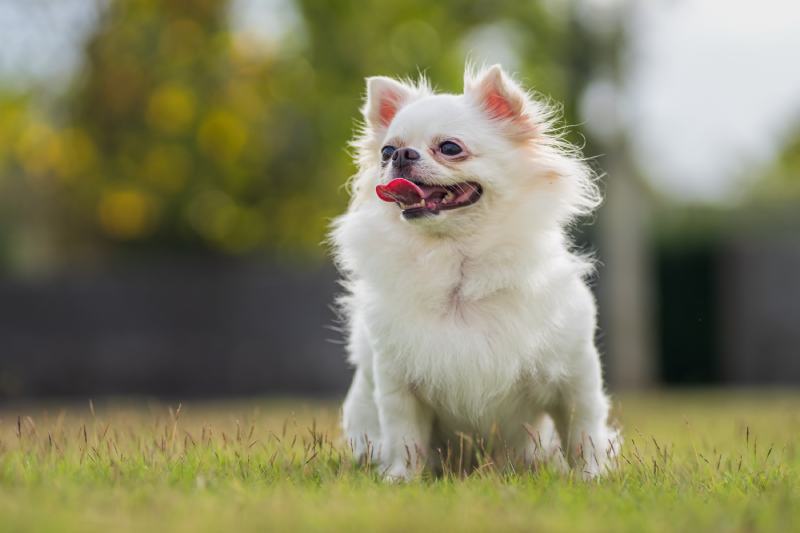What Were Bull Terriers Bred For? Breed History, Facts & FAQ

Updated on
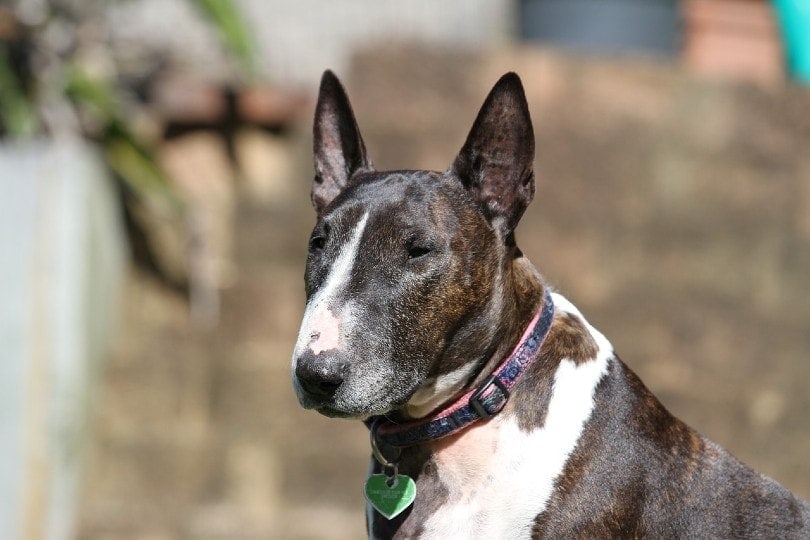
Click to Skip Ahead
Every dog is an individual but knowing some history of the breed can help identify possible characteristics and traits of the dog. It is also interesting to have a history of a dog breed if you own one or are considering getting one.
The Bull Terrier is an interesting dog with a somewhat checkered background. Its ancestors were bred for bull baiting and dog fighting, but the Bull Terrier itself was really bred to look like a fighting dog and to have some of the characteristics of one, but as dog fighting had been outlawed by the time of its introduction, it was really reared to be a show dog, rather than a prize fighter. As it was bred by crossing breeds like Bulldogs, it did still retain some of its fighting traits.
Read on for more information about this breed and its history, as well as some information on today’s Bull Terrier breed.
The Bull Terrier
The Bull Terrier’s early ancestors were Bulldogs, which were bred to bait bulls. One or more would be put in a ring with a bull and would then attack or incite the bull until one of them fell. The dogs had to be strong and tenacious. Fortunately, bullbaiting became illegal in the 19th century, but this led to Bulldogs and other breeds used in this activity being used in rat fighting and even in dog fighting, with most events taking place illegally.
The Bull Terrier, as the name suggests, was also bred from Terriers. Terriers were also highly tenacious dogs and they had to be brave and tough. They would be sent down rat holes to hunt for rats. The breeding of Bulldogs and Terriers led to what was called the “Bull and Terrier.” They had the agility and athleticism of the terrier combined with the strength and bite power of the Bulldog.
As underground dog fighting became increasingly popular, it was these Bull and Terriers that were the chosen breed. In the 19th Century, one English breeder, James Hinks, bred Bull and Terriers with Dalmatians to give them a white coat. It is also likely that they were bred with a slender breed like a Greyhound to bring down their stockiness.
This led to what we now consider the Bull Terrier. This new breed was first shown in Birmingham in 1862 and called the New Bull Terrier. The breed was said to be relaxed and while it didn’t go looking for a fight, it was more than capable of finishing one if a fight did start. It gained the nickname of the “White Cavalier.”
By the turn of the 20th Century, breeders and exhibitors had started to concentrate on the distinct look of the dog’s head, and most aimed to achieve a perfect egg-shaped head. It was also bred with Staffordshire Bull Terriers to bring different colors into the breed so that it was no longer a pure-white breed.
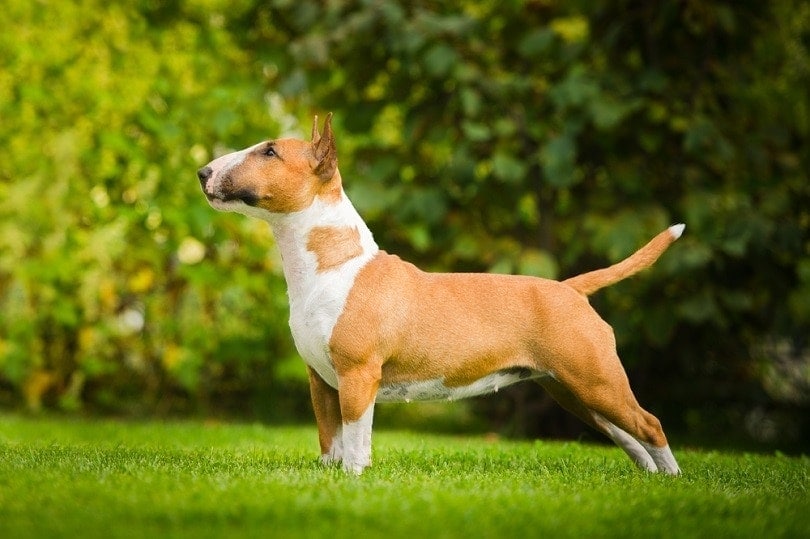
Today’s Bull Terrier
Today, the American Kennel Club describes the Bull Terrier as standing 21 to 22 inches at the shoulder and weighing between 50 and 70 pounds. It can come in a range of colors with some of the most desirable being black brindle, brindle, and red. The dog should have an egg-shaped head. It should be muscular and strong.
The AKC also goes on to say that the four key components to ensuring a happy Bull Terrier are early socialization, firm training, plenty of exercise, and time with its humans. They say that if these four requirements are met, the Bull Terrier will be loyal, loving, and entertaining.
3 Facts About Bull Terriers
1. Bull Terriers Come in Two Sizes
Bull Terriers actually come in two sizes: standard and miniature. The Miniature shares the same physical traits and personality as the standard but it only measures 10 to 14 inches in height and weighs up to around 30 pounds. It still has high energy requirements but may be a better choice for those looking for a small dog.

2. They Can Suffer From OCD
Obsessive Compulsive Disorder in canines, which is more properly known as Canine Compulsive Disorder (CCD), typically results in a dog becoming so obsessed with chasing and even nipping at its own tail that it is only concerned with this activity, and it may even lead to cuts and injuries of the tail. CCD is more common in Bull Terriers than in other dog breeds.
3. They Can Be Clowns
Bull Terriers are somewhat quirky animals. They are especially known for being the “clowns” of the dog world. Among their numerous odd habits, they have moments of madness, sometimes called zoomies, where the dog will suddenly start charging around the room, bouncing off walls, and jumping on and off furniture.
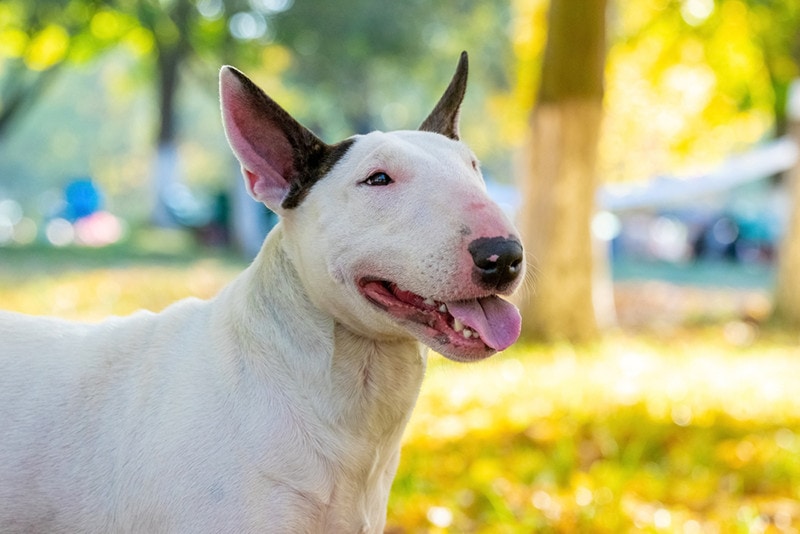
Is the Bull Terrier a Good Family Dog?
Bull Terriers do have something of a bad reputation, largely because they were bred from dogs that were used for fighting. However, with early socialization and good training, they can be very well-adjusted pets. They will usually form a close bond with their humans and can be quite protective. They are good with children, too.
Do Bull Terriers Like to Cuddle?
The breed is an affectionate and loving one that likes to spend time with its family and is not afraid to show its affection. As such, most Bull Terriers do enjoy cuddling with their humans, although every dog is different so there may be some that are less keen.
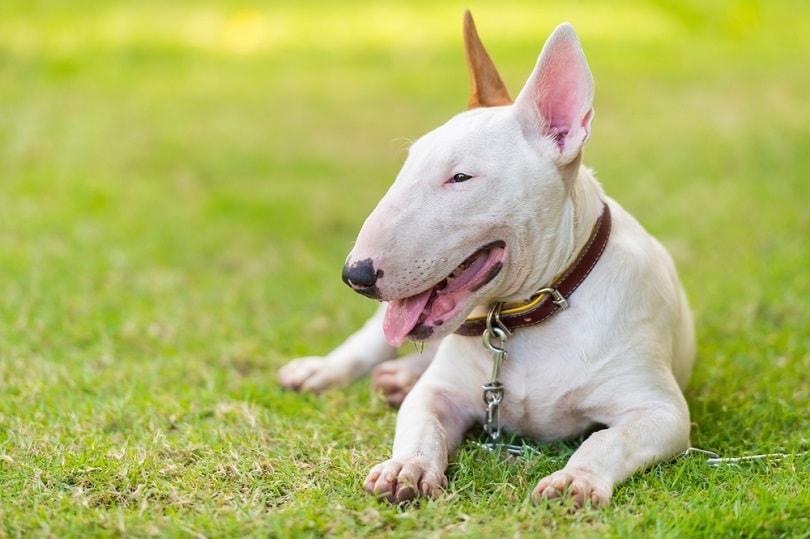
Do Bull Terriers Do Well Alone?
Generally, Bull Terriers do not do well when left alone. They are very close to their humans, and they have a lot of energy, and this combination means that they will miss their humans and may look for ways to entertain themselves while they wait. If you will need to leave your Bull Terrier for long periods, for example, while you’re out at work, you should start getting them used to it at a young age.
Leave your pup for a few minutes at a time and gradually increase the time they’re alone. You should also provide toys and ensure that your Bull Terrier is well-exercised before you leave the house to minimize the risk of destructive behavior.
Do Bull Terriers Bark a Lot?
Bull Terriers do not usually bark excessively, and it is said that if a Bull Terrier barks, it has a good reason to do so, so you should investigate the cause of the barking. They won’t usually bark at strangers, although they may bark if they believe there is a threat that needs your attention.
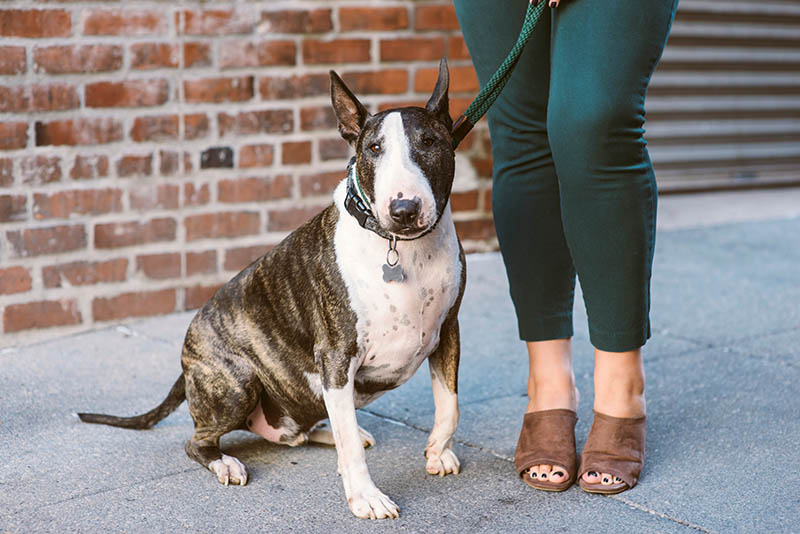
Conclusion
Bull Terriers are distinctive for their egg-shaped head. They are also known for being amusing, fun, and even clownlike in their behavior, as well as loving and loyal. They make excellent family pets and actually come in two sizes, with the standard being the more popular but the miniature being a good option for those looking for a smaller breed.
Although the Bull Terrier’s ancestors were bred for fighting and the first Bull Terriers were likely used for the same purpose, they have long been bred as companions and show dogs, which they are used for today.
Featured Image Credit: Melanie Thomas, Pixabay





